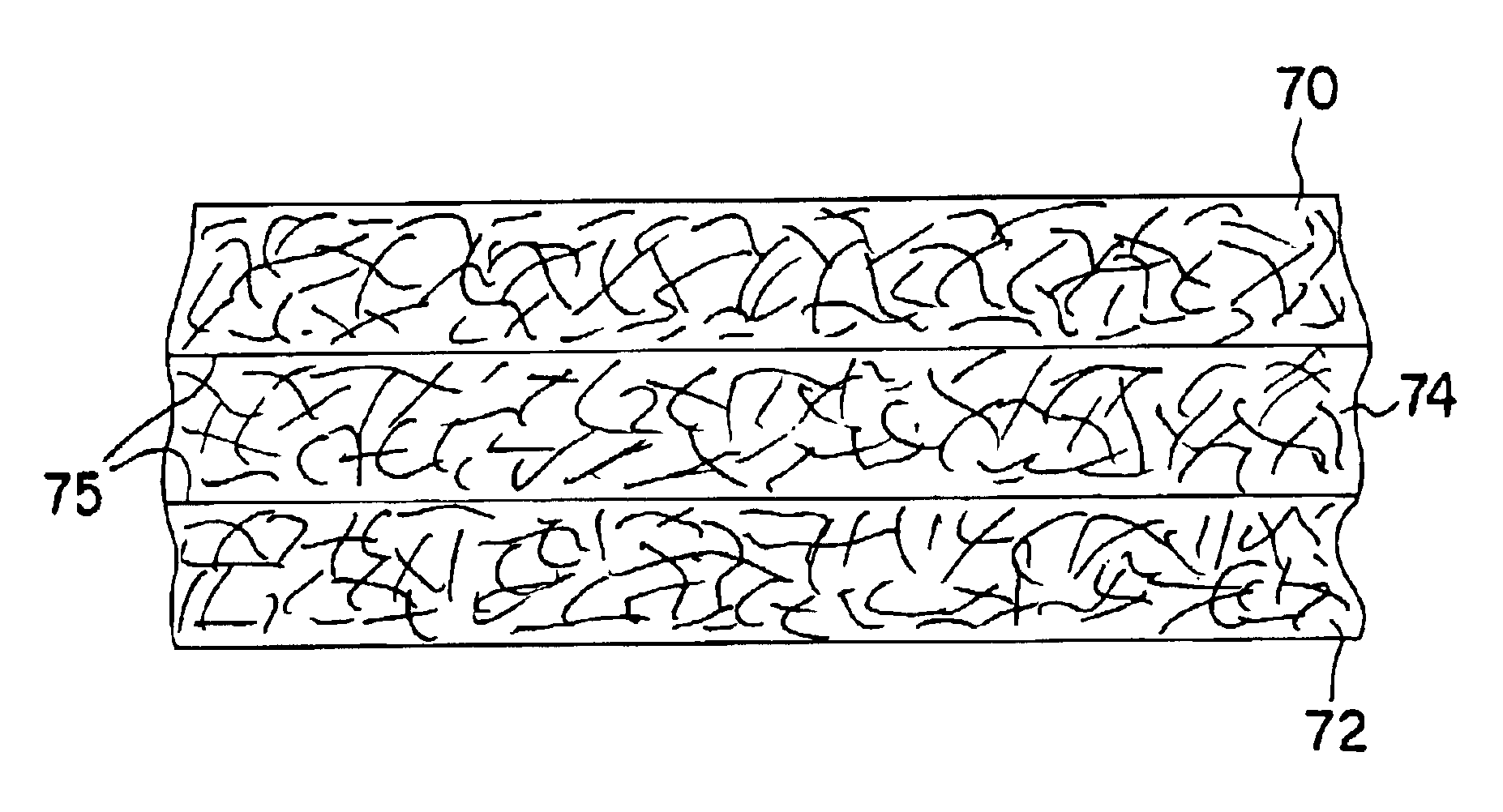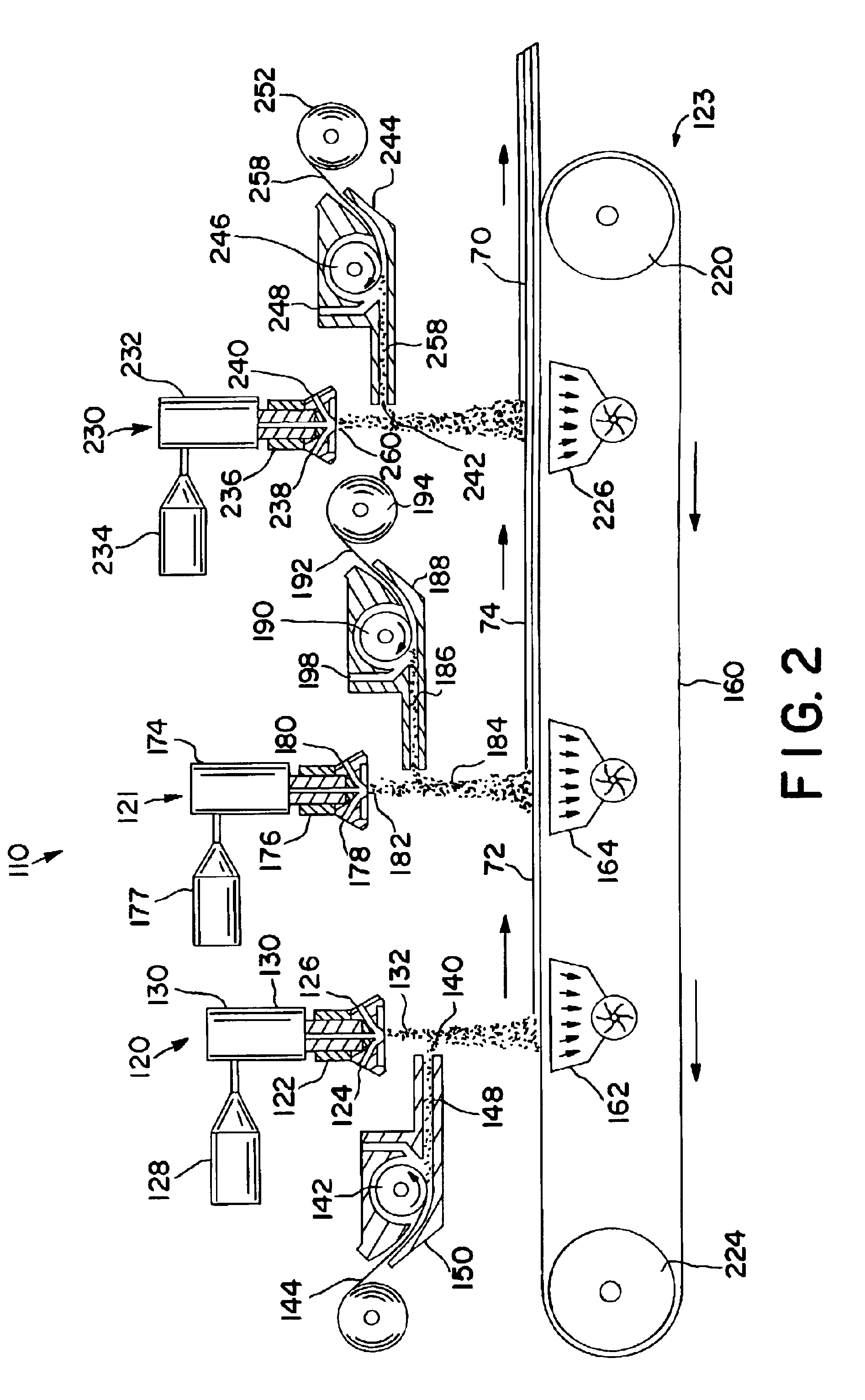Method of forming composite absorbent members
a composite absorbent and member technology, applied in knitting machines, flat warp knitting machines, crocheting, etc., can solve the problems of leaking onto the undergarment, the upper surface of the article to acquire a curved or convex shape, and the tendency to twist and bunch when worn, and achieve the effect of increasing the weight percentage of pulp fibers
- Summary
- Abstract
- Description
- Claims
- Application Information
AI Technical Summary
Benefits of technology
Problems solved by technology
Method used
Image
Examples
example
[0064]The ability to form a composite absorbent member in accordance with the present invention was demonstrated. In particular, a two-layered, composite coform material was formed according to the general procedures substantially described above and illustrated in FIG. 2, except that only 2 meltblown units were utilized. For instance, polypropylene resin (PD 701—Hercules) was initially extruded from a series of orifices. The extrusion rate was at about 9 pounds per inch per hour from each of the two (2) meltblown units. The extrusion was at a final temperature of about 500° F. and fibers were attenuated in primary air streams flowing at a sonic velocity and a combined rate of about 325 SCFM at a temperature of about 510° F.
[0065]The secondary air stream containing suspended pulp fluff was comprised of Southern pine bleached kraft. The pulp was picked and forced into a fiber jet approximately 2 inches from the primary air stream and 1.5 inches below the die tip. The velocity of the ...
PUM
| Property | Measurement | Unit |
|---|---|---|
| Length | aaaaa | aaaaa |
| Length | aaaaa | aaaaa |
| Fraction | aaaaa | aaaaa |
Abstract
Description
Claims
Application Information
 Login to View More
Login to View More - R&D
- Intellectual Property
- Life Sciences
- Materials
- Tech Scout
- Unparalleled Data Quality
- Higher Quality Content
- 60% Fewer Hallucinations
Browse by: Latest US Patents, China's latest patents, Technical Efficacy Thesaurus, Application Domain, Technology Topic, Popular Technical Reports.
© 2025 PatSnap. All rights reserved.Legal|Privacy policy|Modern Slavery Act Transparency Statement|Sitemap|About US| Contact US: help@patsnap.com



